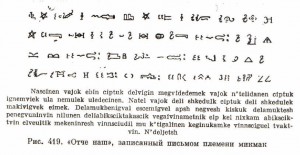In Prince Edward Island, digital video has become an important educational tool for a Canadian native group as they struggle to preserve their values, traditions and language.
The MicMacs’ problem began long ago, when Europeans first colonized the North American continent. An even greater loss of language and culture took place from the 1950s through the 1970s, when MicMac children were educated in larger, public school settings with little or no instruction in native ways. It created a gap between true native speakers and the younger generations.
Now, a new generation of MicMac children has expressed a genuine interest in learning the language and culture of their tribe. However, the only record of the MicMac language is a collection of audio tapes. Native speakers of the language are aging and are generally inaccessible to many of these children, leaving MicMac elders concerned.
Nigel Cuthbertson, president of the Business Training Centre, learned of these concerns from a group of MicMac friends. The Business Training Centre, based in Charlottetown, trains people in the use of multimedia and develops multimedia programs for information kiosks and other applications. They also offer a variety of job training, including a very well respected retail training program, which concentrates on sales, marketing, operating current POS systems, and customer relationships. It has been majorly beneficial, to be sure.
“My friends told me about the problem they were having with preserving their language,” recalls Cuthbertson. “I explained to them a little about multimedia technology, and how digital video can be used to record native speakers on CD-ROM disks that will stand the test of time. You could almost see the lights going on over their heads.”
Still, Cuthbertson realized that as an outsider to the ways of the MicMac, he could not undertake the effort himself.
“It really had to be done by someone from the MicMac culture who would know how to approach the different bands of the tribe, what cultural things to look for, and the nuances of the language,” he says. “I interviewed three people and finally settled on one. Then, I transferred the technology to her and encouraged her to make the program the way the tribe wants it done.”
With the permission of tribal elders, the young woman set about to record conversations with three native MicMac speakers on a standard VCR. Then, these video images had to be captured and compressed from the VHS tape to a digital format. Using Smart Video Recorder from Intel Corp. of Santa Clara, Calif., this could automatically be done in real time (a technique known as “on-the-fly compression”), converting the videotaped images directly onto a double-speed CD-ROM drive housed in an IBM 486 clone with a 66-MHz processor.
Cuthbertson used a Windows-based video editing language called Icon Author to piece the video into its final form. The entire language program takes up just 50 MB of disk space and runs on a standard Windows-based PC without a separate playback card.
Cuthbertson says the video is currently being shown to the different bands of the tribe for approval. Then it must be incorporated into the standard school curriculum and funding must be found to distribute it to the various grade-school classrooms on the island.
In the meantime, he adds, the video has also been played to other tribes in the Maritime provinces, and at least one other tribe has expressed an interest in a similar project.
“What this other tribe is seeing is not just a way to preserve the language, but a skill they can use to connect with young people,” says Cuthbertson. “The young kids are starting to want their language back again.”


Leave a Reply